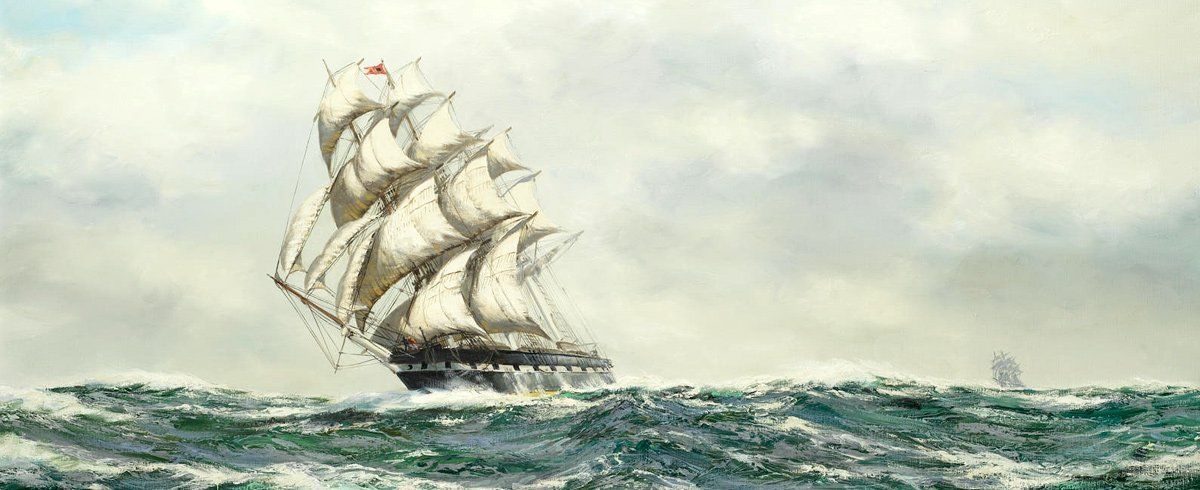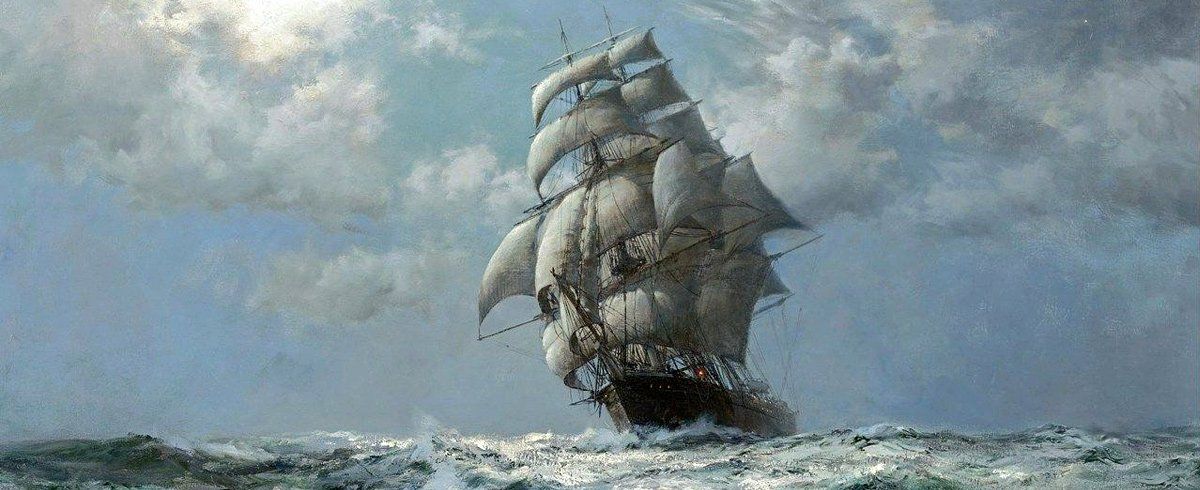Captain Charles McDonnell
Another famous son of Glenariff was Captain Charles McDonnell who is buried in the Bay Cemetery, this remarkable seafarer born at Kilmore, Glenariff in 1827, learnt his early sailing skills around the north Antrim coast, Scotland and later England. His remarkable seamanship took him on a path to become the Captain of two of the world’s fastest sailing ships during the 1800s, the 'Marco Polo' and the 'James Baines'. He was the first officer of the 'Marco Polo' when it set the world record for a round trip to Australia in 1852, after the second voyage he became Captain of the ship age of 25 years, a remarkable achievement in itself. The image below is a painting of the inspirational 'Marco Polo' by the English artist Henry Scott (1911–2005) titled 'Australia Bound'
His next command was the 'James Baines' named after the owner of James Baines and Company, Liverpool. The ship was built in Boston by Donald McKay and regarded as one of the finest ships of an era. On her maiden voyage to the home port of Liverpool in September 1854 the ship shattered the world record by crossing the Atlantic in 12 days and 6 hours. This record still stands today for a sailing ship between the East Boston Light and Liverpool (Rock Light), On one of several return trips to Australia the ship covered a remarkable 420 nautical miles in a day. The image below is a painting of the 'James Baines' by the English artist Montague Dawson (1811-1878) titled 'Midnight South Pacific', a stunning painting.
In April, 1858, tragedy struck the James Baines while unloading at the Husskisen Dock, Liverpool, the cargo of jute, linseed, raw cowhides and rice, caught fire. The result was so intense the ship could not be saved and burnt down to the waterline becoming a total loss. Captain McDonnell was so devastated by the fire and the loss of his ship that he retired and came home to Glenariff. A few months later, on January 25th, 1859, a ship got into difficulties in Red Bay and he went to assist in the rescue of seamen from the stricken vessel. Having spent several hours in freezing water he contracted pneumonia and subsequently died from it aged 31. Why there is not a public sculpture with a maritime focus to this remarkable Glens man is an opportunity lost.



